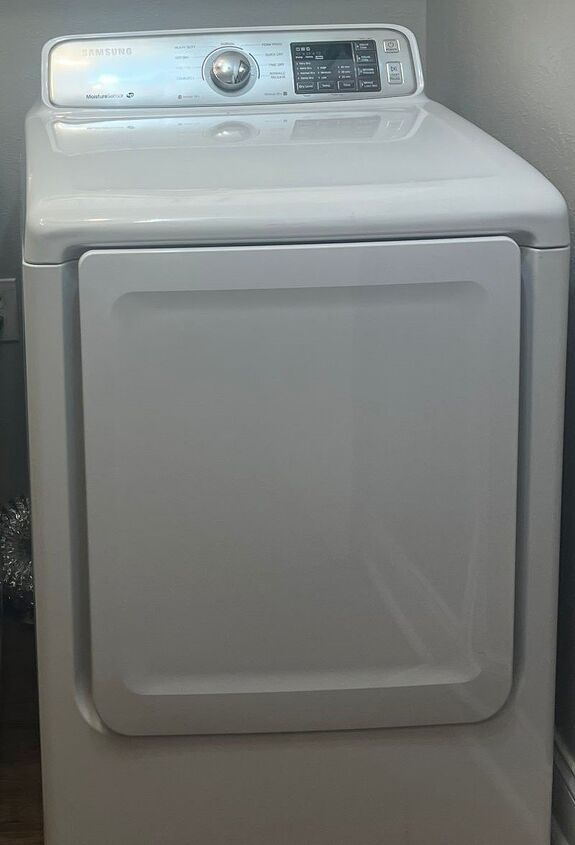what are thoughts for Radiant Barrier insulation?

-
Depends on what the cost is...get out the calculator and divy up the 16% (questionable in itself) divided over the number of years it takes to spend that on energy costs and you'll know. If it costs a$ grand and your bill is $300 and you save 16% , how many years of $48 a month is it worth to you? Best wishes...JL
 JL Spring & Associates
on Sep 21, 2011
Helpful Reply
JL Spring & Associates
on Sep 21, 2011
Helpful Reply -
-
Thanks for the answers, but I'm still hoping for more ideas.
 Jim Ginas
on Sep 25, 2011
Helpful Reply
Jim Ginas
on Sep 25, 2011
Helpful Reply -
-
Radiant barrier systems work ok until they get dirty. Once that happens they begin to loose their ability to reflect the radiant heat. As far as savings, unless your not willing to add insulation or correct air losses through the ceilings which in many cases amounts to about 20-30% of your heating loss from home. Radiant barriers can help. But if properly installed along with proper ventilation which is required to remove the reflective heat that collects in the space above the barrier your pay back will not be warranted based on current costs for this product. Also remember not just the dust collection becomes a problem. The better foil systems have micro holes in the foil face that allow for moisture transfer through the surface of the foil. Once these holes get plugged, you loose and ability of the moisture transfer and condensate can form causing a bunch more issues not even yet addressed yet. Personally I like the concept of these systems. But there are at this time way to many drawbacks that outweigh the system. Remember Radiant barrier systems have been around for many many years. If they were such a good thing why would the insulation companies not provide them as part of their insulation batt system that has vapor barrier attached?
 Woodbridge Environmental Tiptophouse.com
on Sep 26, 2011
Helpful Reply
Woodbridge Environmental Tiptophouse.com
on Sep 26, 2011
Helpful Reply -
-
thats interesting. Didn't realize that. thank you.
 Jim Ginas
on Sep 26, 2011
Helpful Reply
Jim Ginas
on Sep 26, 2011
Helpful Reply -
-
@ Ron O - Thanks for the reference. @ Woodbridge Environmental - The main reason companies do not attach foil radiant barrier to batts is the install method. If you "sandwich" the foil between the insulation and the drywall you no longer HAVE a radiant barrier. Radiant heat by definition is heat transfer ACROSS a void by non-contact. When you "sandwich" the foil you now have a single solid product (drywall-foil-insulation). Heat can typically only go through a solid by conduction. And, since aluminum is the MOST conductive of these three products it does virtually nothing to reduce heat flow unless the foil faces at least one air space to work off of either the emissivity quality or reflectivity quality of the aluminum. This is why you can't install foil directly between shingles and a roof deck and have any effect. I hope this helps. Visit my website http://www.AtticFoil.com/ or call us if you have any other questions.
 Ed F
on Mar 02, 2012
Helpful Reply
Ed F
on Mar 02, 2012
Helpful Reply -
-
Very good post Ed, But there is no reason why they cannot wrap the fiberglass with a foil or have a foil on one side with craft on other. Personally being involved in the energy saving industry, a properly insulated attic along with correct air sealing, removes the need for a foil barrier of any kind. What consumers do not understand and I believe its the sales tactics of those who sell that product as a side line. Is that the consumer believes that the foil barrier takes the place of a properly insulated attic. And that is simply not the case.
 Woodbridge Environmental Tiptophouse.com
on Mar 02, 2012
Helpful Reply
Woodbridge Environmental Tiptophouse.com
on Mar 02, 2012
Helpful Reply -
-
My view as a homeowner with NO KNOWLEDGE, and I understand it is wrong, ....is the assumption that a properly insulated attic (Just paid last year for new blown in insulation to the FLOOR of the attic and THINKING that if I ADD Radiant Barrier to the beams holding the roof, then air coming thru the roof, would be blocked by radiant barriar.
 Jim Ginas
on Mar 02, 2012
Helpful Reply
Jim Ginas
on Mar 02, 2012
Helpful Reply -
-
Ahh, the barrier has nothing to do with the air, Its all about radiant energy which creates heat when it strikes an object., the same kind you feel when standing in a window facing the sun. The trick is to send the radiant energy back out, and the shiny foil barrier reflects this energy which then is pushed back out again. That is why if it gets dusty, it looses some of its ability to reflect and begins to absorb the heat.
 Woodbridge Environmental Tiptophouse.com
on Mar 02, 2012
Helpful Reply
Woodbridge Environmental Tiptophouse.com
on Mar 02, 2012
Helpful Reply -
-
ok, so does it make sense to have rolled insulation pinned up against the roof, between the beams, so help keep much of the outside out, or is that just overkill?
 Jim Ginas
on Mar 03, 2012
Helpful Reply
Jim Ginas
on Mar 03, 2012
Helpful Reply -
-
In a ventilated attic, putting insulation between the rafters is usually the wrong place. You want insulation to be part of your "thermal envelope" which is your sheetrock and any insulation you have on top of it - attic floor. Putting insulation in between the rafters in a vented attic is kinda like holding a jacket over your head. It won't keep you any warmer, and it will ACT like an umbrella to a certain extent, but why not just use an umbrella? A radiant barrier acts as an umbrella (from the heat) which is your first line of defense against radiant heat and traditional insulation (on your attic floor) acts as your 2nd line of defense against conductive heat. They work together for maximum reduction in heat flow. Typically with a radiant barrier the top surface temperature of the insulation will be 20º- 40º cooler than without. This drops the Delta-T (temperature difference) from the outside surface temperature to the inside surface temperature. The lower the Delta-T, the less heat flow. If you can drop the Delta-T, you are effectively increasing the r-value of the existing attic insulation. @Woodbridge Environmental - yes, dust accumulation will impact the reflectivity of the top layer of foil. However, with a double-sided product like AtticFoil the bottom side will never accumulate dust and will always work off the emissivity (foil facing down - just like Techshield Decking) quality of the radiant barrier. Finally, the whole issue with dust tends to be a little overblown. There ARE areas and circumstances where dust can accumulate on the foil rapidly (like right next to a dirt road). But under normal circumstances it's a little contradictory when you think about it. The dust MUST be light enough and small enough to FLOAT in the air in order to be pulled into the attic. Yet HEAVY enough to instantly fall and settle on top of the foil. I've been in hundreds of attics and even after being built 10-20 years you look around and there is typically surprisingly little dust in most cases. Hope this helps! http://www.AtticFoil.com/
 Ed F
on Mar 04, 2012
Helpful Reply
Ed F
on Mar 04, 2012
Helpful Reply -
-
@ Ed. yes this helps TONS...... I think this is the response I was hoping for. Assuming other experts agree, then I can hire an insulation guy to do the Radiant Barrier. one time cost to help the house stay cooler in summer and warmer in the winter is goal..... Assume Radiant Barrier has a life of at least 10+ years, before losing any effectiveness? (or is it still too new to know?) ... and of course without restricting air flow required in the attic to ensure I'm not doing more damage then good. - if the long term savings does not outweigh the costs, then with current insulation package we had upgraded last year, I'm ok. Gas and Electric have been at lowest in last 4+ years I've been at this house. (Actually in last 10 years between both houses!
 Jim Ginas
on Mar 04, 2012
Helpful Reply
Jim Ginas
on Mar 04, 2012
Helpful Reply -
Related Discussions
Would you rather wash and fold laundry or clean the dishes?
Given the choice, would you prefer washing the dishes or doing laundry? Share your preferences and insights!
Need help picking a paint color to match my tile
The tile is gray/white with a hint of beige and looks like wood.The kitchen counters are Baltic beige and cabinets are dark wood as well
How is it really spelled?
Hi, I may be way off base, and if so, I apologize in advance, but I have heard many references to "Fir", the type of wood, with regards to kitchen walls and soffits, ... See more
Why does my oven smell when turned on?
Hi all,Lately, my oven emits an unpleasant smell whenever I turn it on. The kitchen then smells and the foul odor lingers, it's very frustrating.I'm sure I'm not alon... See more
How do I fix a broken metal hanging rod in my closet
I have a broken shelf hanging rod in my closet I tried gluing And taping it and nothing worked I need help and also the shelf is slightly bent
How to find out the value of antique furniture
My husband and I are looking to sell his grandmother's dining room set but, we have no idea what to ask for it. We could not find any markings as to who made it, all ... See more
How can I lighten my dark stained deck, or even paint parts white?
The previous owners used an oil-based, semi-transparent, dark walnut brown stain on the deck they built. I want to lighten up the area, perhaps even paint the deck c... See more





